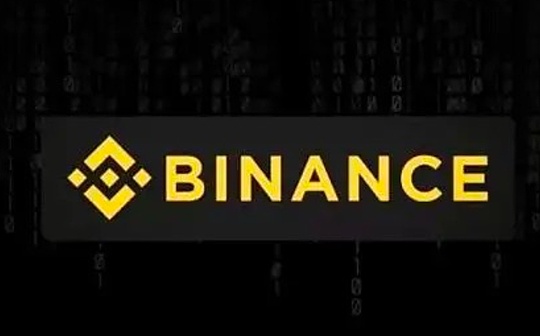summary
With the gradual integration of artificial intelligence (AI) and blockchain (Crypto) technology, the global digital economy is ushering in a profound change. The combination of AI+Crypto not only brings new development opportunities to traditional industries, but also provides a new business model for the crypto market and digital assets field. In this trend, the MCP (Model Context Protocol) protocol, as a key protocol for the deep integration of AI and blockchain, is providing a new solution for the decentralized, transparent and traceable characteristics of AI models.
Chapter 1 AI+Crypto: The dual wave of fusion is accelerating
Since 2024, we have heard the phrase "AI+Crypto". From the emergence of ChatGPT, to the launch of multimodal super models such as OpenAI, Anthropic, and Mistral, and to the attempts of various DeFi protocols, governance systems and even NFT social platforms on the chain to try to access AI Agents, this "dual technology wave" is no longer a distant imagination, but a new paradigm evolution that is happening in reality.
The fundamental driving force of this trend comes from the complementarity between the two major technical systems on the demand side and the supply side. The development of AI has made it possible to migrate "task execution" and "information processing" from humans to machines, but it still faces fundamental limitations such as "lack of contextual understanding", "lack of incentive structure", and "untrusted output". The on-chain data system, incentive design mechanism, and programmatic governance framework provided by Crypto can make up for these shortcomings of AI. In turn, the Crypto industry also urgently needs stronger intelligent tools to handle highly repetitive tasks such as user behavior, risk management, and transaction execution, which is exactly what AI is good at.
In other words, Crypto provides a structured world for AI, and AI injects proactive decision-making capabilities into Crypto. This integration of technologies that are both underlying and form a new pattern of deep "mutual infrastructure". A notable example is the emergence of AI Market Makers in the DeFi protocol. This type of system uses AI models to model market fluctuations in real time, and combines variables such as on-chain data, order book depth, cross-chain sentiment indicators to realize dynamic liquidity scheduling, thereby replacing the traditional static fixed-parameter model. For example, in the governance scenario, the AI-assisted "Governance Agent" began to try to analyze the content of the proposal and user intentions, predict voting tendencies, and push personalized decision-making suggestions to users. In this scenario, AI is not just a tool, but gradually evolved into an "on-chain cognitive executor".
Not only that, from a data perspective, the behavioral data on the chain naturally has verifiable, structured and censor-resistant properties, which makes it an ideal training material for AI models. Some emerging projects (such as Ocean Protocol and Bittensor) have tried to embed on-chain behavior into the process of fine-tuning of the model. In the future, "on-chain AI model standards" may even appear, so that the model has native Web3 semantic understanding capabilities during training.
At the same time, the on-chain incentive mechanism also provides an economic driving force for AI systems that is more sound and sustainable than the Web2 platform. For example, the Agent incentive protocol defined by the MCP protocol allows model executors to no longer rely on API calls to bill, but can obtain token rewards through the on-chain "Proof of Task Execution + User Intent Performance + Traceable Economic Value". That is to say, AI agents can "participate in the economic system" for the first time, not just nested as tools.
From a more macro perspective, this trend is not only a technological integration, but also a paradigm switching. AI+Crypto may eventually evolve into a "on-chain social structure with Agent as the core": humans are no longer the only governor, and models can not only execute contracts on the chain, but also understand the context, coordinate games, actively govern, and build their own microeconomics through token mechanisms. This is not science fiction, but a reasonable deduction based on the current technical trajectory.
Because of this, the narrative of AI+Crypto has quickly gained high attention from the capital market in the past six months. From a16z, Paradigm to Multicoin, from Eigenlayer's "validator market" to Bittensor's "model mining" to the recent launch of projects such as Flock and Base MCP, we see a consensus gradually forming: AI models will play a role not only as "tools" in Web3, but as "subjects" - they will have identities, contexts, incentives, and even governance rights.
It can be foreseeable that in the Web3 world after 2025, AI agents will be an unavoidable system participant. This participation method is not a traditional access to "off-chain model + on-chain API", but is gradually evolved into a new form of "model is node" and "intention is contract". Behind this is the semantics and execution paradigm built by new protocols such as MCP (Model Context Protocol).
The integration of AI and Crypto is one of the few "bottom-bottom docking" opportunities in the past decade. This is not a hot spot for a single point explosion, but a long-term, structural evolution. It will determine how AI operates on the chain, coordinates, and is motivated, and will ultimately define the future form of the social structure on the chain.
Chapter 2: Background and core mechanism of the proposed MCP protocol
The integration of AI and encryption technology is entering a critical period of practicality verification from the concept exploration stage. Especially since 2024, after the big models represented by GPT-4, Claude, and Gemini have begun to have stable context management, complex task decomposition and self-learning capabilities, AI no longer only provides "off-chain intelligence", but gradually has the possibility of continuous interaction and autonomous decision-making on the chain. At the same time, the crypto world itself is undergoing structural evolution. The maturity of technologies such as Modular blockchain, Account Abstraction, and Rollup-as-a-Service has greatly improved the flexibility of on-chain execution logic and cleared environmental obstacles for AI to become a native participant in blockchain.
In this context, MCP (Model Context Protocol) was proposed, with the goal of building a common protocol layer for running, executing, feedback and benefits on the chain. This is not only to solve the technical problem of "AI cannot be used efficiently on the chain", but also to respond to the systemic demand of the Web3 world itself to the "Intent-centric Paradigm". Traditional smart contract calling logic requires users to have a high understanding of the chain's state, function interface, and transaction structure, which has a huge gap with the natural expression methods of ordinary users. The intervention of AI models can bridge this structural break, but the AI model must play a role, provided that it can have "identity", "memory", "authority" and "economic incentives" on the chain. The MCP protocol was born to solve this series of bottlenecks.
Specifically, MCP is not a separate model or platform, but a full-chain semantic layer protocol that runs through AI model calls, context construction, intent understanding, on-chain execution and incentive feedback. The core of its design revolves around four levels: the first is the establishment of the model identity mechanism. Under the MCP framework, each model instance or agent Agent has an independent on-chain address and can receive assets, initiate transactions, and invoke contracts through the permission verification mechanism, thus becoming the "first account" in the blockchain world. The second is the context collection and semantic interpretation system. This module abstracts on-chain state, off-chain data, historical interactive records, combined with natural language input, to provide the model with a clear task structure and environmental background, so that it has the "semantic context" to execute complex instructions.
At present, several projects have begun to build prototype systems around the MCP concept. For example, Base MCP is trying to deploy AI models as publicly callable on-chain agents to serve scenarios such as transaction strategy generation and asset management decisions; Flock has built a multi-agent collaboration system based on the MCP protocol, allowing multiple models to collaborate dynamically around the same user task; while projects such as LyraOS and BORK are further trying to expand MCP into the basic layer of the "model operating system", on which any developer can build model plug-ins with specific capabilities and for others to call, thus forming a shared on-chain AI service market.
From the perspective of crypto investors, the proposal of MCP not only brings new technology paths, but also an opportunity to reshape the industrial structure. It opens up a new "native AI economic layer", and the model is not only a tool, but also an economic participant with accounts, credit, returns and evolutionary paths. This means that in the future, market makers in DeFi may be models, voting participants in DAO governance are models, content curators in NFT ecosystems are models, and even the on-chain data itself is parsed, combined and repriced by the model, thus deriveing a brand new "AI behavioral data asset". Investment thinking will therefore shift from "investment in an AI product" to "investment in an incentive center, service aggregation layer or cross-model coordination protocol in an AI ecosystem layer". As the underlying semantics and execution interface protocol, MCP's potential network effects and standardization premium are very worthy of medium- and long-term attention.
As more and more models enter the Web3 world, the closed loop of identity, context, execution and incentives will determine whether this trend can be truly implemented. MCP is not a single point breakthrough, but an "infrastructure-level protocol" that provides a consensus interface for the entire AI+Crypto Inspur. What it tries to answer is not only the technical “how to make AI on the chain”, but also the economic system “how to motivate AI to continue to create value on the chain”.
Chapter 3 Typical landing scenarios of AI Agent: How MCP reconstructs on-chain task mode
When the AI model truly has an on-chain identity, a semantic context perception, able to parse intentions and perform on-chain tasks, it is no longer just an "auxiliary tool", but an on-chain agent in the substantial sense, becoming the active body of execution logic. And this is precisely the greatest significance of the existence of the MCP protocol - it is not to make a certain AI model stronger, but to provide a structured path for the AI model to enter the blockchain world, interact with contracts, collaborate with people, and interact with assets. This path not only includes underlying capabilities such as identity, permissions and memory, but also includes operational intermediate layers such as task decomposition, semantic planning and performance proof. Ultimately, it leads to the possibility that AI Agent actually participates in building the Web3 economic system.
Starting from the most practical application, on-chain asset management is the first field that AI Agent penetrates. In the past DeFi, users needed to manually configure wallets, analyze liquidity pool parameters, compare APYs, and set policies. The whole process was extremely unfriendly to ordinary users. The AI Agent based on MCP can automatically crawl the data on the chain after obtaining intentions such as "optimized yield" or "control risk exposure", judge the risk premium and expected fluctuations of different protocols, and dynamically generate a trading strategy combination, and then verify the security of the execution path through simulated calculations or on-chain real-time backtesting. This model not only improves the personalization and response speed of strategy generation, but more importantly, it enables non-professional users to entrust assets in natural language for the first time, making asset management no longer a highly technical behavior.
Another scenario that is accelerating maturity is on-chain identity and social interaction. Previous on-chain identity systems were mostly based on transaction history, asset holding or specific proof mechanisms (such as POAP), and their expressiveness and plasticity were extremely limited. When the AI model intervenes, users can have a "semantic agent" that is continuously synchronized with their preferences, interests and behavior dynamics. This agent can participate in social DAO on behalf of users, publish content, plan NFT activities, and even help users maintain their reputation and influence on the chain. For example, some social chains have begun to deploy agents that support MCP protocol to automatically assist new users in completing the Onboarding process, establishing social graphs, participating in comments and voting, thereby transforming the "cold start problem" from product design problem to smart agent participation problem. Further, in the future when identity diversity and personality forks are widely accepted, a user may have multiple AI agents for different social situations, and MCP will become the "identity governance layer" that manages these agents' code of conduct and enforcement authority.
The third key focus of AI Agent is governance and DAO management. In the current DAO, activity and governance participation rate have always been bottlenecks, and the voting mechanism also has strong technical thresholds and behavioral noise. After the introduction of MCP, an agent with semantic analysis and intention understanding can help users regularly sort out DAO dynamics, extract key information, semantic summary of proposals, and recommend voting options or automatically execute voting behaviors based on understanding user preferences. This on-chain governance based on the "preference proxy" mechanism greatly alleviates the problems of information overload and incentive mismatch. At the same time, the MCP framework also allows models to share governance experience and strategy evolution paths. For example, if an agent observes negative externalities caused by a certain type of governance proposal in multiple DAOs, the experience can be fed back to the model itself, forming a cross-community governance knowledge migration mechanism, thereby building an increasingly "smart" governance structure.
In addition to the above mainstream applications, MCP also provides unified interface possibilities for AI on-chain data curation, game world interaction, ZK automatic proof generation, cross-chain task relay and other scenarios. In the field of GameFi, AI Agent can become the brain behind non-player roles (NPCs), realizing real-time dialogue, plot generation, task scheduling and behavioral evolution; in the NFT content ecosystem, the model can serve as a "semantic curator", recommending NFT collections based on user interests, and even generating personalized content; in the field of ZK, the model can quickly translate intentions into ZK-friendly constraint systems through structured compilation, simplifying the zero-knowledge proof generation process, and improving the universality of development thresholds.
From the commonalities of these applications, it can be clearly seen that what the MCP protocol is changing is not the single point of performance of a certain application, but the paradigm of task execution itself. Traditional Web3 task execution is based on the premise of "you know how to do it" - users must clearly master the underlying knowledge such as contract logic, transaction structure, and network fees. MCP converts this paradigm to "you just need to express what you want to do", and the rest is left to the model to complete. The intermediary layer of interaction between the user and the chain changes from a code interface to a semantic interface, and from a function call to an intent orchestration. This fundamental change has promoted AI from a "tool" to a "behavior subject" and also transformed blockchain from a "protocol network" to a "interactive context".
Chapter 4 In-depth analysis of the market prospects and industry application of MCP protocol
As a cutting-edge innovation in the integration of AI and blockchain technology, the MCP protocol not only brings a new economic model to the crypto market, but also provides new development opportunities for multiple industries. With the continuous advancement of AI technology and the continuous expansion of blockchain application scenarios, the market prospects of MCP protocol will gradually show its huge potential. This chapter will deeply analyze the application prospects of MCP protocol in multiple industries, and conduct in-depth discussions on market dynamics, technological innovation, industrial chain integration, etc.
4.1 Market potential of AI+Crypto integration
The integration of AI and blockchain has become an important force in promoting the digital transformation of the global economy. Especially under the promotion of the MCP protocol, the AI model can not only perform tasks, but also exchange value on the blockchain to become an independent economy. With the continuous development of AI technology, more and more AI models have begun to undertake actual market tasks and participate in multiple fields such as commodity production, service delivery, and financial decision-making. At the same time, the decentralization, transparency and immutability of blockchain provide an ideal trust mechanism for the AI model, allowing it to be implemented and applied quickly in a variety of industries.
It is expected that the integration of AI and crypto markets will usher in explosive growth in the next few years. As one of the pioneers of this trend, the MCP protocol will gradually occupy an important position, especially in the fields of finance, medical care, manufacturing, smart contracts and digital asset management. The emergence of AI native assets not only creates rich opportunities for developers and investors, but also brings unprecedented disruptive impacts to traditional industries.
4.2 Diversification and cross-border collaboration in market applications
The MCP protocol brings possible cross-border convergence and collaboration to multiple industries. Especially in industries such as finance, medical care and the Internet of Things, the application of MCP protocol will greatly promote innovative development in various fields. In the financial industry, the MCP protocol can promote the deepening of the DeFi ecosystem by providing tradable "right to income" assets for AI models. Users can not only invest in the AI model itself, but also trade model income rights on decentralized financial platforms through smart contracts. The emergence of this model provides investors with a wider range of investment options and may promote more traditional financial institutions to expand into the blockchain and AI fields.
In the medical field, the MCP protocol can support the application of AI in precision medicine, drug development, and disease prediction. AI models analyze large amounts of medical data, generate disease prediction models or drug development directions, and cooperate with medical institutions through smart contracts. This collaboration not only improves the efficiency of healthcare services, but also provides transparent and impartial solutions in data privacy protection and outcome allocation. The incentive mechanism of the MCP protocol ensures that the rights and interests of AI models and healthcare providers are equally distributed, thereby encouraging the emergence of more innovative technologies.
Applications in the Internet of Things (IoT) field, especially in the construction of smart homes and smart cities, will also benefit from the MCP protocol. AI models can provide intelligent decision-making support for IoT devices through real-time analysis of sensor data. For example, AI can optimize energy consumption based on environmental data, improve collaboration efficiency between devices, and reduce the cost of the overall system. The MCP protocol provides reliable incentive and reward mechanisms for these AI models, ensuring the enthusiasm of all parties to participate, thereby promoting the further development of the Internet of Things.
4.3 Technological innovation and industrial chain integration
The market prospects of the MCP protocol are not only dependent on its own technological breakthroughs, but also on its ability to promote the integration and collaboration of the entire industry chain. In the combination of blockchain and AI, the MCP protocol will promote the deep integration of the industrial chain, break down traditional industrial barriers, and promote cross-industry resource integration. For example, in terms of sharing AI training data and optimizing algorithms, the MCP protocol can provide a decentralized platform that allows all parties to share computing resources and training data without relying on traditional centralized institutions. Through decentralized transaction methods, the MCP protocol helps to break the data silos in traditional industries and promote data flow and sharing.
In addition, the MCP protocol will further promote the open source and transparency of technology. Through blockchain-based smart contracts, developers and users can independently customize and optimize AI models. The decentralized nature of the MCP protocol allows innovators and developers to cooperate and share technological achievements in an open ecosystem, which provides important support for technological progress and innovation in the entire industry. At the same time, the combination of blockchain and AI has also continuously expanded the application scenarios of technology, from finance to manufacturing, from medical care to education, MCP protocol has broad application space.
4.4 Investment Perspective: Future Capital Market and Commercialization Potential
With the popularity and maturity of the MCP protocol, investors' attention to this field will continue to rise. The MCP protocol provides investors with a variety of ways to participate through a decentralized reward mechanism and asset-based model income rights. Investors can directly purchase the profit rights of the AI model and obtain returns through the market performance of the model. In addition, the token economic design in the MCP protocol also provides new investment varieties for the capital market. In the future digital asset market, AI model assets based on the MCP protocol may become an important investment target, attracting various capitals including venture capital, hedge funds and individual investors to enter this market.
The participation of the capital market will not only promote the popularization of the MCP protocol, but also accelerate its commercialization process. Enterprises and developers can obtain financial support by financing, selling or licensing the benefits of AI models to further develop and optimize AI models. In this process, capital flow will become an important force in promoting technological innovation, market application and industrial expansion. Investors' confidence in the MCP protocol will directly affect its position and business value in the global market.
Chapter 5 Conclusion and Future Prospect
The MCP protocol represents an important direction for the integration of AI and crypto markets, especially in decentralized finance (DeFi), data privacy protection, smart contract automation, and AI assetization, which shows huge development potential. As AI technology becomes increasingly progressive, more and more industries will gradually realize AI empowerment, and the MCP protocol provides a decentralized, transparent and traceable operating platform for these AI models. Under this framework, it can not only improve the efficiency and value of AI models, but also bring wide market acceptance to it.
In the past few years, blockchain technology and artificial intelligence (AI) have gradually moved from their own independent fields to convergence. With the continuous development of technology, the combination of AI and blockchain not only provides new solutions for various industries, but also promotes the birth of a new business model. The MCP protocol came into being in this context. By introducing decentralization and incentive mechanisms, it has brought unprecedented innovation to the crypto market by leveraging the complementary advantages of AI and blockchain. With the continuous maturity of AI and blockchain technologies, the MCP protocol will not only reshape the ecosystem of the digital asset economy, but will also provide a new impetus for global economic transformation.
From an investment perspective, the application of the MCP protocol will attract a large amount of capital inflows, especially those venture capital and hedge funds that pursue innovative investment opportunities. As more and more AI models can be assetized, traded and added value through the MCP protocol, the market demand they generate will further promote the popularization of the protocol. Furthermore, the decentralized nature of the MCP protocol means that it can avoid single point of failure of the centralized system, thereby enhancing its long-term stability in the global market.
In the future, as the MCP protocol ecosystem becomes increasingly rich, AI and crypto assets based on this protocol may become mainstream investment tools in digital currencies and financial markets. These AI assets can not only become value-added tools for the crypto market, but may also develop into important financial commodities around the world, promoting the formation of a new global economic pattern.
















No comments yet